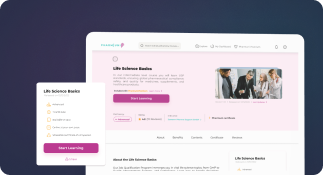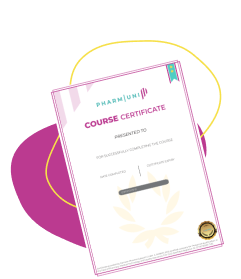Audits expose weak habits, not only weak documents. Therefore, a smart GMP eLearning program must shape daily behavior, not just pass exams. Modern teams need short, targeted lessons that tie directly to SOP steps and data trails. Moreover, managers need dashboards that reveal risk early. When training aligns with process risk, audit findings drop.
This guide shows how to build GMP eLearning that prevents deviations and speeds CAPA closure. You will map processes, pick the right content formats, and measure impact against risk. Additionally, you will learn how to connect lessons to SOPs, batch records, and data integrity rules. Each section uses plain language, clear steps, and strong examples.
Finally, you will get a governance model, a launch plan, and a feedback loop. Thus, your program will evolve with change control, not fight it. By the end, you will own a GMP eLearning system that auditors respect and operators trust.

Why GMP eLearning Builds Audit-Ready Habits
GMP eLearning works when it focuses on the job, the risk, and the evidence chain. Short modules reduce cognitive load, which improves recall during real tasks. Moreover, role paths keep operators, technicians, QA, and supervisors on relevant tracks. Learners practice decisions, not just definitions.
Next, connect training to the documents that auditors read first. Map lessons to SOP numbers, logbooks, and forms. Then show where data begins, moves, and gets reviewed. People learn faster when examples match their screens and their tools. Also, micro-scenarios build judgment around gray areas like sampling, OOS, and ALCOA.
Finally, measure what matters. Track right-first-time documentation, deviation trends, and CAPA closure times. Tie LMS analytics to process KPIs. Therefore, leaders can see risk change as training improves. Auditors appreciate proof that the system works.
GMP eLearning Essentials: What Your Program Must Include
- Regulatory alignment: Anchor every lesson to CFR, EU GMP, and relevant guidances.
- Clear learning objectives: State precise actions learners will perform on the job.
- Role-based pathways: Tailor content for operators, QC analysts, QA reviewers, and supervisors.
- Microlearning modules: Deliver five to eight minute lessons that fit shift realities.
- Interactive scenarios: Let people practice choices and see consequences safely.
- SOP mapping: Link each topic to specific SOP numbers and forms.
- Assessments with evidence: Test application, not trivia, using job-real items.
- CAPA decision practice: Build judgment for containment, correction, and prevention.
- Data integrity focus: Reinforce ALCOA+ at every data touchpoint.
- Documentation drills: Recreate batch fields and require complete, legible entries.
- Change control basics: Explain impact analysis and cross-functional review.
- Audit readiness drills: Simulate interviews and document retrieval under time pressure.
Design eLearning Around Risk: A Practical Framework
Inspections find weak links where process risk meets human behavior. Therefore, design your GMP eLearning around the riskiest steps first. Start with a process map, not a course catalog. Then translate failure modes into sharp, job-real learning objectives. People will remember what they repeatedly use, so target what they repeatedly touch.
Moreover, keep traceability from objective to SOP, to form field, to evidence in the LMS. This thread proves effectiveness during audits and guides quick updates after changes. Finally, adjust depth by risk, not by tradition. High-risk steps deserve more scenarios, tighter mastery thresholds, and faster refresh cycles. Low-risk areas still get coverage, but with lighter touches and longer recurrences. As a result, training effort aligns with outcome impact.

GMP Risk Analysis: From Process Map to Training Plan
Risk analysis anchors GMP eLearning in real operations. Map materials, manufacturing, QC, release, and complaints. Then score failure modes by likelihood, detectability, and impact. Use recent deviations, OOS events, and near misses as signal boosters. Consequently, your plan prioritizes where errors actually occur, not where slides are easiest to write. Next, convert ranked risks into action verbs that describe observable behavior. Finally, pick assessment formats that mirror the work: documentation drills for batch fields, branching for decisions, checklists for line clearance.
- Map high-exposure steps across the data trail, including handoffs and metadata capture.
- Rank failure modes with a simple matrix; add severity notes for patient impact.
- Surface real signals from deviations, CAPA themes, and internal audit findings.
- Align retraining cadence to risk bands; shorten cycles where trends rise.
This approach creates a living risk register for training. Moreover, it feeds your release notes, informs change control, and gives auditors a crisp story.
Content Architecture: From Objectives to SOP Alignment
Architecture turns analysis into teachable, traceable modules. Write one concise objective per lesson with clear acceptance criteria. Then embed the SOP number, form ID, and screen path inside the module shell. Learners see the exact field, the correct entry format, and the required signature. Additionally, keep a consistent flow: context, demo, guided practice, independent practice, and application quiz. Because formats drive behavior, use screenshots, redacted batch pages, and real instrument readouts. Lastly, store version IDs and approval records with the module for instant evidence.
- Define measurable behavior using action verbs: document, verify, segregate, escalate.
- Bind each objective to specific SOP steps, forms, and data sources.
- Show “what good looks like” with annotated examples and correction rules.
- Trace every edit through controlled change logs, reviewers, and effective dates.
This structure speeds authoring, reduces ambiguity, and strengthens audit defense. Furthermore, it simplifies refreshes when processes evolve.

Metrics: Measure What Lowers Audit Risk
Right-first-time documentation
Track batch record corrections per lot. Two sentences follow patterns and prompt coaching.
Deviation rate trend
Measure rate per thousand batches. Trends reveal training gaps quickly.
CAPA closure time
Monitor days from open to verified effectiveness. Shorter cycles signal stronger skills.
Audit finding mix
Classify observations by topic. Shifts show where to add modules.
Assessment mastery
Review item-level results. Poor items expose content or SOP confusion.
Completion by role
Compare timely completions across functions. Lags flag access or scheduling issues.
SOP read-and-understand
Track acknowledgment cycles. Long delays suggest workflow friction.
Time to competency
Measure days from hire to independent work. Faster ramps cut errors.
On-the-job checks
Use observation checklists. Field notes validate training transfer.
LMS anomalies
Watch unusual access patterns. Spikes can indicate test-sharing risks.
Operationalizing eLearning: Build, Launch, Improve
Real improvement happens when plans meet production beats. Therefore, operationalize your GMP eLearning with tight sprints, clear owners, and measurable checkpoints. Start by selecting the highest-risk topics and shipping a minimum viable curriculum fast. Then collect evidence from the floor, not just from quizzes, to confirm transfer of learning.
Moreover, treat training releases like validated changes. Version modules, log approvals, and publish release notes inside the LMS. Additionally, schedule short retros to convert pilot feedback into upgrades. Finally, wire your loop to QA signals—deviations, OOS, and CAPA—so the roadmap stays reality-based. As a result, your program learns as fast as your processes evolve.

Build and Launch Your GMP eLearning Sprint
Speed matters, yet control matters more. Set a two-to-four-week sprint that ships the essentials for your top five risks. Next, gather SOPs, redacted batch pages, and screen captures to anchor every exercise in reality. Moreover, draft micro-scenarios mirror real choices and consequence paths. Then assemble a diverse pilot cohort across roles, shifts, and experience levels to pressure-test clarity and timing. Finally, define success criteria before launch: target completion windows, item-level mastery thresholds, and field observation checklists. Therefore, you can decide quickly whether to scale, refine, or hold.
- Select risk-ranked topics and write sharp objectives with explicit acceptance criteria.
- Assemble assets—SOP references, forms, screenshots, and equipment images—to ground each lesson.
- Pilot with cross-functional learners, capturing quiz data, time-on-task, and confidence ratings.
- Record approvals, version IDs, and release notes inside the LMS for instant audit traceability.
Consequently, your sprint produces usable training, defensible documentation, and a clean path to wider rollout.
Improve with Continuous Validation and Feedback
Iteration turns a good launch into a resilient system. Begin with a structured review of pilot metrics and floor observations. Additionally, compare pre- and post-training signals: right-first-time documentation, deviation themes, and CAPA cycle times. Replace weak questions, clarify muddy steps, and tighten scenarios where judgment still slips. Moreover, refresh media so screens match current equipment, software builds, and labels. Then lock changes through the same approval workflow, maintaining a transparent lineage from problem to fix. Finally, publish an update cadence—monthly for critical topics, quarterly for stable areas—so learners expect steady, low-friction improvements.
- Analyze LMS analytics and QA signals together to pinpoint high-value edits.
- Refine content wording, visuals, and branching logic where confusion persists.
- Align retraining frequency with risk bands; shorten cycles when trends rise.
- Communicate concise change summaries so supervisors can brief teams quickly.
Thus, continuous validation keeps modules accurate, behaviors aligned, and audit evidence strong—without slowing operations.

Roles, RACI, and Review Cadence
- Regulatory affairs: Interprets new rules and flags training impacts. Rapid alerts keep content compliant.
- Quality assurance: Owns approval, effectiveness checks, and audit responses. Closure evidence links to modules.
- Training manager: Designs curricula and manages LMS health. Metrics roll up into risk dashboards.
- Subject matter experts: Provide procedures, data flows, and realistic scenarios. Reviews ensure accuracy.
- Supervisors: Coach on the floor and log observations. Feedback informs micro-updates.
- IT/LMS admin: Maintains access, SSO, and reporting. Uptime and data integrity stay protected.
- Data protection lead: Reviews privacy, retention, and access rules. Controls align with GDPR.
- Internal audit: Tests effectiveness and probes edge cases. Findings reshape objectives.
- Manufacturing leads: Align training with shift constraints. Schedules fit production beats.
- Vendors/partners: Supply tools, templates, or content. Contracts define version control.
GMP eLearning for Global Teams: Localization, Access, and Evidence
Global operations magnify small inconsistencies into systemic risk. Therefore, localize GMP eLearning with surgical precision, not blanket translation. Keep technical terms stable where regulators expect fixed wording, yet adjust units, decimal separators, and date formats to local practice. Moreover, show screenshots from each site’s actual systems, labels, and forms. Learners trust what mirrors their daily environment, and auditors respect evidence that matches reality. Finally, anchor every localized module to the same master objective and SOP lineage so variant content stays traceable.
Access determines effectiveness across time zones and bandwidth constraints. Provide offline-capable modules, short file sizes, and resumable playback. Additionally, enforce ALCOA+ for every locale: user identity, timestamps, and version IDs must remain complete and contemporaneous. Then secure records with consistent retention, privacy controls, and site-level audit trails. Coordinate approvals through a global RACI so translations move fast without losing oversight. Consequently, quality, regulatory, and data protection teams can verify fidelity before publishing. Thus, the same standard routes to compliant evidence everywhere.
- Localize numeric notation and dates to site norms; prevent misreads and transcription errors consistently.
- Surface real screenshots per site; align fields, drop-downs, barcode layouts, and validation prompts.
- Enforce ALCOA+ metadata everywhere; lock signatures, timestamps, version IDs, and learner records within LMS.
- Standardize translation memory; reuse approved phrases and cut re-review cycles across sites globally.
- Centralize release notes; show change rationale, approvers, and effective dates for each locale clearly.
Advanced Content That Cuts Audit Risk
Two areas consistently drive findings: data integrity and change control. Address them deeply with targeted GMP eLearning content. Trainers should make invisible data flows visible. Additionally, leadership should treat learning as a core control, not a side activity.
GMP eLearning for Data Integrity and ALCOA+
GMP eLearning for Change Control and Impact Assessment
Start with real screenshots from your systems. Show where metadata lives and how time stamps appear. Additionally, explain why contemporaneous entries matter and how to avoid backdating traps. Learners must see the data trail, not only read about it.
Build branching scenarios around gray zones: partial entries, illegible corrections, and shared logins. Then practice the right behaviors with immediate feedback. Cover electronic signatures, audit trails, and hybrid paper-electronic flows. Finally, test with job-real items that mirror routine tasks. Evidence will look strong when auditors probe.
Explain the lifecycle of a change from idea to verified effectiveness. Map roles, forms, and decision gates. Moreover, tie every change to risk and validation scope. People must understand why approvals take time.
Use case studies of process tweaks, instrument swaps, and supplier changes. Learners analyze impact on documents, training, and validation. Then they plan updates for SOPs, batch records, and eLearning modules. Close with effectiveness checks that verify outcomes, not only paperwork. Thus, improvements stick without adding new risks.
GMP eLearning for Data Integrity and ALCOA+
Start with real screenshots from your systems. Show where metadata lives and how time stamps appear. Additionally, explain why contemporaneous entries matter and how to avoid backdating traps. Learners must see the data trail, not only read about it.
Build branching scenarios around gray zones: partial entries, illegible corrections, and shared logins. Then practice the right behaviors with immediate feedback. Cover electronic signatures, audit trails, and hybrid paper-electronic flows. Finally, test with job-real items that mirror routine tasks. Evidence will look strong when auditors probe.
GMP eLearning for Change Control and Impact Assessment
Explain the lifecycle of a change from idea to verified effectiveness. Map roles, forms, and decision gates. Moreover, tie every change to risk and validation scope. People must understand why approvals take time.
Use case studies of process tweaks, instrument swaps, and supplier changes. Learners analyze impact on documents, training, and validation. Then they plan updates for SOPs, batch records, and eLearning modules. Close with effectiveness checks that verify outcomes, not only paperwork. Thus, improvements stick without adding new risks.
Content Library: Build Once, Reuse Everywhere
Documentation excellence
Micro-lessons on legibility, completeness, and corrections. Two sentences reinforce real fields.
Sampling and testing
Practical steps for chain of custody and labeling. Errors drop with drills.
Cleaning and line clearance
Visual checks and verification steps. Confusion fades with annotated photos.
Deviations and OOS
Rapid containment and structured investigation flow. Confidence grows with guided practice.
CAPA management
Root cause to effectiveness checks. Teams internalize prevention thinking quickly.
Equipment logs
Calibration, maintenance, and use logs. Entries match ALCOA+ without hesitation.
Change control
Impact, risk, and approvals. People escalate before shortcuts happen.
Data integrity basics
ALCOA+, hybrid records, and audit trails. Habits align with controls.
Warehousing and distribution
FEFO, temperature mapping, and excursions. Evidence remains solid in audits.
Complaint handling
Intake, triage, and trending. Responses meet timelines consistently.
Authoring and Review: Speed Without Risk
Speed scales when authors follow a strict, reusable system. Therefore, build a GMP eLearning kit that ships quality by default. Use pre-approved templates, component libraries, and media patterns to compress draft cycles. Moreover, keep a controlled glossary so nomenclature, units, and correction rules never drift. Version of everything: objectives, screens, transcripts, item banks, and alt text. Then tie each change to SOP references and release notes, so audit evidence remains instant.
Collaborative review needs discipline, not endless comments. Set acceptance criteria up front and tag reviewers by RACI. Additionally, require authors to show “what good looks like” with annotated examples before review starts. As a result, SMEs react to clarity, not guesswork, and approvals move quickly. Before publication, pass every module through the same automated gate. Accessibility checks, broken-link scans, and data-capture tests catch risk early. Finally, store proof of testing inside the LMS record, alongside approvals and effective dates.
- Templates and components: Pre-approved shells, quiz patterns, and UI blocks accelerate drafting. Consequently, authors focus on accuracy, not layout.
- Glossaries and style guide: Controlled terms, units, and abbreviations keep language stable. Moreover, reviewers spend time on substance instead of microedits.
- Evidence pack: Auto-collect version IDs, approvers, change reasons, and effective dates. Therefore, auditors can trace decisions without leaving the LMS.
- Workflow and redlines: Parallel SME, QA, and RA reviews shorten calendar time. Additionally, comment conventions and acceptance criteria prevent scope creep.
- Preflight QA suite: Automated accessibility, link, and SCORM/xAPI checks protect learners and data integrity. Finally, capture signoff artifacts within the module record.
Pharmuni’s GMP Career Path — A Faster Route to Audit-Ready Skills
Strong programs turn training into clean evidence. Pharmuni’s GMP Career Path does exactly that with role-based sequences, short lessons, and scenario drills mapped to your SOPs. Learners practice job-real actions first, then confirm mastery with application-style assessments. Moreover, managers see impact through metrics that track right-first-time documentation, deviation patterns, and CAPA speed.
Content spans documentation excellence, ALCOA+, deviations and OOS, CAPA, change control, cleaning and line clearance, equipment logs, warehousing, and complaint handling. Additionally, each module carries version IDs and approval notes for instant traceability. Localization support aligns units, dates, and screenshots to site norms. Consequently, teams learn faster, retain more, and walk into audits with confidence.
- Role-based sequences guide operators, QC analysts, QA reviewers, and supervisors along clear skill pathways.
- Risk-aligned microlearning (5–8 minutes) maps directly to SOP IDs, forms, and data capture points.
- Scenario-based assessments mirror batch fields, audit-trail views, and real decision branches.
- Manager dashboards surface RFT rates, deviation themes, and CAPA cycle times for action.
- Change-controlled updates keep content synchronized with process changes and validation scope.
Get audit-ready, faster.
Conclusion
You reduce audit risk when training shapes behavior and proves effectiveness. GMP eLearning does that by tying modules to real tasks, real documents, and real data trails. Moreover, metrics link learning to process quality, not vanity numbers. Leaders can see risk shift as training improves.
Start small and focus on the top five risks. Then pilot, measure, and refine quickly. Build governance that protects quality while keeping speed. Additionally, localize formats and reinforce ALCOA+ in every module. Evidence will line up naturally during audits.
Finally, treat learning as living control, not a single event. Update modules through change control and audit trends. Therefore, your people stay sharp, your records stay clean, and your inspections stay calm.
References:

Stephanie Männicke
Digital Marketing Especialist at Zamann Pharma Support, brings 8 years of experience in Corporate and Digital Communication. Specializing in Digital Marketing and Content Creation, Stephanie is currently focused on creating strategic content for Pharmuni's networks, especially content on topics such as recruitment, onboarding and employer branding. Outside of work, Stephanie is a mum, a crocheter and a movie fan. An avid reader and in search of expanding her knowledge, Stephanie is always looking for ways to innovate communication in the digital environment and connect people in a genuine way.
FAQs:
GMP eLearning delivers role-based training through short, job-real modules. Lessons map to SOPs, batch records, and data integrity rules so knowledge transfers to daily work.
Risk-aligned modules target high-impact steps and reinforce ALCOA+. As documentation quality improves, deviations drop and audit findings shift from major to minor.
Operators, QC analysts, QA reviewers, and supervisors see direct gains. Each role follows a tailored path with scenarios that mirror real decisions.
Keep lessons five to eight minutes to fit shift realities. Microlearning improves recall and reduces training fatigue.
Track right-first-time documentation, deviation trends, CAPA cycle time, and audit finding mix. Link LMS results to process KPIs for a complete picture.

Good Manufacturing Practices Examples in 2025: GMP Made Simple
Good Manufacturing Practices (GMP) examples show what “controlled work” looks like in a real factory. They include hygiene, line clearance, label checks, and complete batch

PSMF in Pharmacovigilance: Beginner’s Guide for 2025
The Pharmacovigilance System Master File (PSMF) explains how a company protects patients through structured safety work. It shows regulators the people, processes, and systems behind

Good Manufacturing Practices in Quality Assurance: Essential GMP Basics for QA in 2025
GMP and quality assurance work together to keep medicines safe, consistent, and trusted. GMP sets clear rules for how to make, test, and document products.


